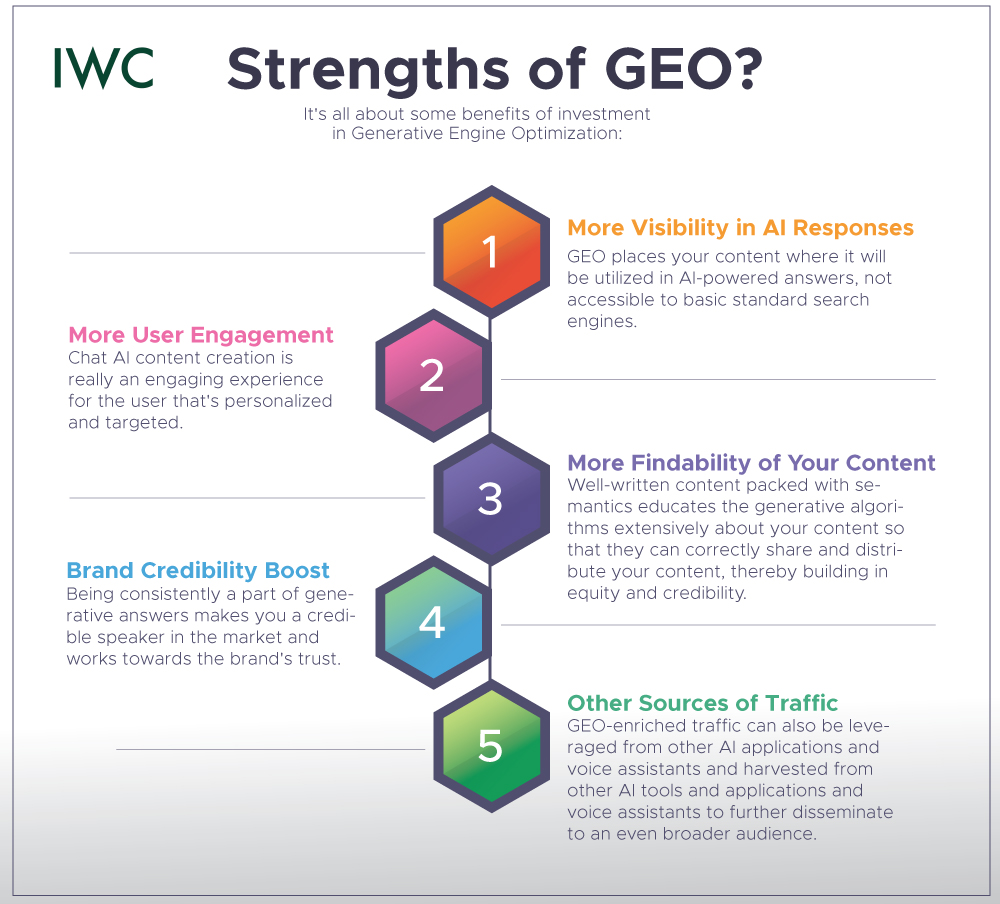The Beginner's Guide to Generative Engine Optimization (GEO)
.jpg&w=3840&q=75)
Glitzy buttons need to be attached to Generative Engine Optimization (GEO) on the dynamic periphery of online marketing. Since AIs have appeared and brought along their revolutionary way of how buyers engage with information on the internet, old-fashioned SEO will no longer be enough. GEO appears to be the way to get your content ranked and, above all, engage in this hyper-generative AI economy.
This session will be discussing what GEO is, how it differs from SEO, and why it ought to be the future of Internet marketing. Whether you are an old-school marketer or a new entrant with a questioning mind, this beginner's tutorial of GEO will provide that confidence boost to enter this new realm.
What is Generative Engine Optimization?
Generative Engine Optimization, or GEO, is the search relevance and visibility optimization of generative search engine and AI interface-based digital assets and content. Unlike the keyword matching and grading signals-based search engine, the generative engines are based on LLMs decoding the intent of the user and generating an adaptive conversational response.
Imagine GEO bringing your content to AI interfaces like ChatGPT, Gemini, Claude, and other generative search engines that people use. GEO is not spam-keyword-AI-standard content being user intent and context aware.
Generative Engine Optimization and Daily SEO
Both GEO and SEO cast broader nets to be heard of seeing more content, but they do so differently. So let's examine some of the key things that distinguish them.
Aspect | Traditional SEO | Generative Engine Optimization (GEO) |
Focus | Search engine result page (SERP) ranking | Generating high-quality, contextually specific answers in conversational AI interfaces |
Techniques | Keywords, backlinks, metadata, technical optimization | Semantic richness, AI prompt engineering, structured data, natural language understanding |
User Interaction | Tap a list of results | They are presented with an answer from a generative model |
Content Strategy | Static web pages optimized for keywords | Machine-readable conversational text with clear context and natural language |
Measurement | Click-through rates, bounce rates, organic rankings | Model citations, answer inclusion rates, brand visibility in AI responses |
So essentially, GEO is all about fitting your content to how the generative engines scavenge and vomit out answers and SEO was the old game of trying to rank well on search engines.
Major Features of Generative Engine Optimization
GEO specialization calls for education and proficiency in a group of fantastic features:
.jpg)
1. Semantic Relevance
Generative models will favour intent-aware content, providing contextually sensitive responses. GEO requires you to design content that is semantically sensitive and understandable to AI models and deployable.
2. The Conversational Tone
Whereas a formally written tone used to be required for SEO, GEO avoids anything less than a conversational tone. As such, AI-driven efforts to replicate human words, replicas in the language of real conversation, might well find their way into one of their pieces.
3. Content Clarity and Organisation
Generative algorithms such as structure and readability. Put answers in headings or bullet points and compose brief paragraphs in a manner that can be easily read and paraphrased by AI on the answers.
4. Context and Authority
Artificial intelligence algorithms calculate context and authority to determine what to believe. Artificial intelligence algorithms employ others, independent thought, and referencing higher-authority sources in return to establish authority.
5. Prompt Engineering and Data Markup
GEO works if prompt engineering is done correctly, which Basically means producing content that anticipates user questions. Structured data should be used (like FAQs, Q&A format). This tells the generative model that your content answers a wide series of user questions.
Why is GEO important?
Cyberspace is changing very fast. Generative AIs in various guises are transforming customers' shopping experience, the behaviour of buying while shopping online, and decision-making. GEO becomes imperative if one has to remain up-to-date.
User Behaviour Change: Customers are relying more and more on conversational AI for instant answers that are very specific to their needs. GEO places your brand at the forefront of such a conversation.
Brand Credibility: Placing your brand in the AI-recommended answers makes your brand tangible and unique.
Competitive Advantage: GEO will have a better chance of success than early adopters since generative engines will be the new norm for search.
Future-Proofing: Since AI applications are already being integrated into search engines (just recall Search Generative Experience by Google), GEO is already in the right position for a digital strategy.
Strengths of GEO?
It's all about some benefits of investment in Generative Engine Optimization:
1. More Visibility in AI Responses
GEO places your content where it will be utilized in AI-powered answers, not accessible to basic standard search engines.
2. More User Engagement
Chat AI content creation is really an engaging experience for the user that's personalized and targeted.
3. More Findability of Your Content
Well-written content packed with semantics educates the generative algorithms extensively about your content so that they can correctly share and distribute your content, thereby building in equity and credibility.
4. Brand Credibility Boost
Being consistently a part of generative answers makes you a credible speaker in the market and works towards the brand's trust.
5. Other Sources of Traffic
GEO-enriched traffic can also be leveraged from other AI applications and voice assistants and harvested from other AI tools and applications and voice assistants to further disseminate to an even broader audience.
Generative Engine Optimization (GEO): FAQs
Q1: Will GEO replace classic SEO?
No, but technologies will support each other. Classical SEO continues to work for classical SERPs, whereas GEO is a contribution to visibility creation in AI-based search and chat interfaces.
Q2: How do I get started with GEO?
Understand which question you are answering for your readers and provide good chat-like material. Employ FAQs, Q&A, and semantically useful content.
Q3: Do I need to remake my whole SEO strategy?
Not really. Consider GEO an add-on to SEO. You can incorporate GEO best practices into what you have already done successfully with SEO.
Q4: Is technical know-how needed for GEO?
You do need some technical know-how-the ideal slice of structured data markup and prompt engineering-but you do know your content strategy and user intent even better.
Q5: What does GEO success mean to you?
Measurement can be thought of in the following way:
Integration with AI responses
Your brand chat on chat AI sites
Interaction rates between AI platforms
Referral traffic of artificial intelligence-powered search interfaces
Conclusion
Generative Engine Optimization (GEO) is the new era of being noticed on the web. Anyone familiar with generative engines and how to make content fit in them will know their business will be search's future and its roots in AI.
When you marry into GEO now, you will always be at the front of the pack creating the right relevant interesting content for your listeners-whenever and wherever they search.
Ready to Future-Proof Your Digital Presence with Expert GEO Services?
Partner with Indian Website Company, a leading affordable website development company in India. We create user-centric, responsive, and high-performance websites and applications for global clients. Our GEO-optimized solutions ensure your content ranks in AI-powered search results. Get started today.
Also Read: Top Benefits of Hiring a Website Developer from India
Recent Blogs

How Much Does it Cost to Develop a Generative AI App?

Why Should You Care About Wholesale Website Development?


